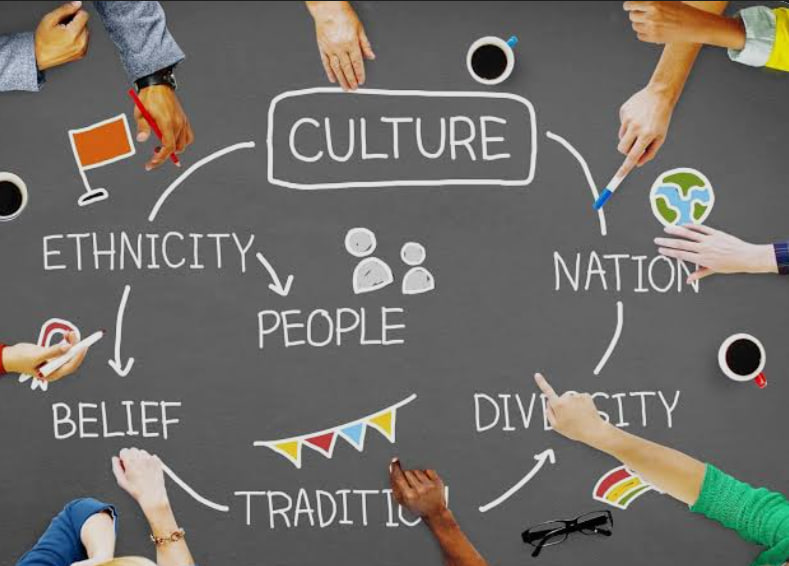Understanding Cultural Awareness, Sensitivity, and Competence
Still mixing up cultural awareness, sensitivity, and competence? In today’s diverse workforce, weak cultural skills generate costly friction. McKinsey reports that leadership diversity boosts financial returns by over 36%. This isn't a knowledge gap—it's an execution deficit. Read on to master the essential distinctions, transforming diversity from a friction point into your ultimate success driver.
Cultural Awareness: The Foundational Stage
Positive engagement is rooted in fundamental recognition. This stage marks our transition from viewing our own culture as the sole benchmark to simply accepting that divergent realities and lifestyles exist.
Here, we will unpack Cultural Awareness, establishing why it is the necessary prerequisite—the foundational building block—before advancing to sensitivity and competence.
Defining Cultural Awareness: Acknowledging Cross-Cultural Nuances
Cultural Awareness is the initial cognitive shift—the intellectual acceptance that every culture operates by a distinct socio-cultural blueprint and a set of unwritten mandates. It requires recognizing that your personal worldview and professional conduct are not universal mandates, but rather a cultural artefact shaped by your specific context.
Crucially, this concept emphasizes the theoretical comprehension of diversity’s existence, without demanding immediate behavioural integration or any evaluative judgment.
The essence of this awareness is simple: recognizing that individuals from diverse backgrounds operate with:
- Varying ethical lenses for professional conduct.
- Distinct communicative protocols (verbal and non-verbal).
- Contrasting frameworks for concepts like authority, responsibility, and time.
The Foundational Step: Perception Drives Action
Cultural Awareness is the cornerstone of the entire intercultural competence journey, establishing the cognitive foundation necessary for all subsequent skill development.
Three core areas define its criticality:
- The Learning Prerequisite: It dictates that without the initial intellectual acceptance of difference, the motivation to pursue cultural sensitivity and growth remains absent.
- The Developmental Baseline: This stage, per the Bennett Scale (Bennett Scale), marks the crucial shift from operating in cultural "Denial" to active "Recognition"—a prerequisite for any effective intercultural engagement.
- A Catalyst for Change: It provides the necessary mental scaffolding and psychological readiness required to embrace the higher-order behavioural skills of cultural competence.
Ultimately, this baseline awareness enables individuals to navigate cross-cultural dynamics effectively in a professional setting.
Case Study: The Fluidity of Punctuality
Peter’s Cultural Awareness crystallizes when he confronts the global reality that 'time' is a cultural construct, not a fixed measure. He recognizes, for instance, that punctuality in a context like Germany is significantly more rigid than in cultures that view time as flexible.
Crucially, this cognitive shift prevents him from projecting personal time norms. However, this intellectual threshold offers no guarantee of behavioral competence; it remains mere theoretical scaffolding that must precede practical adaptation.
"Cultural Awareness is the foundational stage where one acknowledges cultural variances without judgment. It is the simple realization that "my way is not the only way." This initial awareness is the essential groundwork for building subsequent Cultural Sensitivity and Competence".

Cultural Sensitivity: From Knowing to Connecting
Cultural Sensitivity represents the pivotal transition from mere cognitive awareness to actionable consideration. This is the necessary step that actively converts passive cultural recognition into an intentional policy of non-offense.
This section defines cultural sensitivity, highlighting its pivotal utility and catalytic function within modern, diverse workplaces.
Defining Cultural Sensitivity: Valuing Variance, Not Judging It
Sensitivity is an enforced attitudinal stance—an ethical disposition that mandates respectful appreciation of cultural variance while demanding strict neutrality on value judgments.
It extends far beyond superficial etiquette, requiring the immediate, practical activation of Cultural Awareness through specific behavioral mandates:
- Affirming the intrinsic parity of all cultural blueprints.
- Calibrating communication and conduct to eliminate unintended offense proactively.
- Cultivating authentic empathy for divergent global perspectives and professional norms.
The Critical Divide: From Insight to Impact
The fundamental difference between Cultural Sensitivity and Awareness is a strategic shift: from mere cognitive assessment to decisive behavioral action. While Awareness simply affirms, "Differences exist," Sensitivity compels the core question, "What is the optimal response to these differences?"
Awareness vs. Sensitivity: A Strategic Comparison
|
Feature |
Cultural Awareness (Cognitive Baseline) |
Cultural Sensitivity (Attitudinal Stance) |
|
Primary Focus |
Theoretical validation of cultural variance. |
Emotional maturity and respect toward said variance. |
|
Ultimate Goal |
System knowledge and comprehensive cultural understanding. |
Risk mitigation and establishing a secure psychological climate. |
|
Level of Action |
Passive Acceptance (No behavioral mandate). |
Proactive Adjustment (Demands conscious conduct modification). |
A landmark "Harvard Business Review" study confirms: high cultural sensitivity is a direct driver of corporate innovation. This effectiveness stems from a psychologically safe climate that facilitates candid, critique-free exchange—the core accelerator of mastering intercultural dynamics.
Case Study: Respectful Scheduling (Sensitivity in Action)
Manager Mark exhibits sensitivity by consciously deferring critical meetings during team members' religious holidays, absent any mandate. This translates immediate holiday recognition into a practical, respectful decision. Such proactive deference sets the stage for Cultural Competence, demanding execution over mere appreciation.
"Cultural Sensitivity is the ability to understand and value cultural differences, proactively avoiding words or actions that may be perceived as offensive. It mandates attention to communication nuances, effectively bridging gaps to foster mutual trust and respect".
Cultural Competence: The Executive Phase
Transitioning from awareness and sensitivity, we reach the apex of cultural skills: Competence. This phase translates positive intent into tangible, measurable results.
This section defines Cultural Competence, outlining its core dimensions that enable both individuals and organizations to achieve sustained success in a globalized ecosystem.
Defining Competence: Capacity for Effective Cross-Cultural Execution
Cultural Competence is the advanced threshold that moves beyond mere appreciation of difference; it represents a deployable, integrated framework of:
These elements confer the capacity to operate successfully and effectively across disparate cultural contexts.
Competence, a dynamic and continuous process, fosters high-performance alignment in multicultural teams; this engine champions active adaptation over passive avoidance across cultural contexts.
Core Dimensions: The K-S-A Framework
Cultural Competence is only achievable through the cohesive integration of three primary components that constitute a comprehensive framework. These core dimensions are non-negotiable:
1. Knowledge: The Cognitive Base
Deep comprehension of global cultures' values, practices, and specific needs.
2. Skills: The Adaptive Capacity
The ability to calibrate behavior, communication, and interventions to varying cultural contexts
3. Self-Awareness: The Internal Lens
Recognition of personal biases and cultural values, and their intrinsic influence on interaction.
Thus, if Cultural Awareness provides the cognitive foundation and Sensitivity provides the attitudinal stance, Competence represents the actual, sustained practice.
Case Study: Adaptive Feedback (Competence Apex)
A culturally competent leader, Sarah, does more than just acknowledge her team's diversity; she tailors her feedback delivery to maximise its positive impact.
Specifically, she may utilize a Direct Feedback style with a member from a culture valuing overt clarity, while applying an Indirect, positively buffered approach with those who prioritize conflict avoidance.
This adaptive execution is the tangible manifestation of the Cross et al. Model (1989) suggests that proving competence is the direct result of applying integrated knowledge and skills.

The Three-Stage Intercultural Continuum
Having reviewed each concept separately, it is essential to synthesize the key differentiators into a visual framework that clarifies the transition across the three stages.
|
Term |
Concise Definition (What?) |
Primary Focus (How?) |
|
Cultural Awareness |
Recognizing the existence of cultural differences and similarities. |
Cognitive Baseline: Focus on theoretical knowledge and recognition. |
|
Cultural Sensitivity |
Respecting and appreciating differences; avoiding unintentional offense. |
Attitudinal Stance: Focus on stance, empathy, and ethical conduct. |
|
Cultural Competence |
The ability to interact successfully and effectively across disparate cultures. |
Behavioral/Skill-based: Focus on adaptation, execution, and practical application. |
"In essence, Cultural Awareness is the knowledge, Sensitivity is the attitude, and Competence is the application. The continuum moves from recognition (Awareness) to developing respect (Sensitivity), culminating in the ability to interact successfully (Competence)".
Frequently Asked Questions (FAQ)
1. Can an Individual Exhibit Sensitivity Without Prior Awareness?
No, Awareness is the non-negotiable prerequisite. One cannot respectfully engage with differences (Sensitivity) without first recognizing their existence.
2. How Can an Organization Quantify Its Cultural Competence?
Competence is measurable via self-assessments, performance metrics in multicultural teams, and KPIs for global projects. Tools like the Intercultural Development Inventory (IDI) are the industry standard for empirical validation.
3. What are the Critical Intercultural Communication Skills Supporting Competence?
Key skills: Active listening, decoding non-verbal cues, calibrating style (direct vs. indirect), respectfully initiating open dialogue, and eliminating generalizations and assumptions.
The Competence Imperative: Final Thoughts
Effective cross-cultural performance is a mandatory evolution: from perception to mastery. This imperative is defined by three stations: Awareness (recognition of difference), Sensitivity (the respectful stance to avoid offense), and Competence (the actual, adaptive capacity to succeed across variance). Simply being aware or sensitive is inadequate; competence is the engine driving superior corporate financial outcomes.
Now that the distinctions are clear, what tangible step will you champion today to advance your team’s cultural competence?
This article was prepared by coach Aisha Al Hadrami, a coach certified by Glowpass.


 Main menu
Main menu





